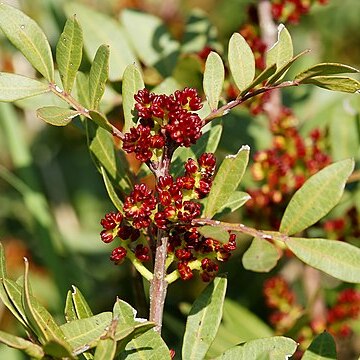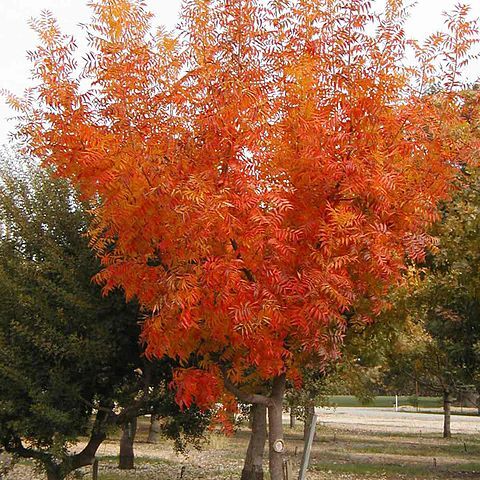Dioecious shrubs or trees with resinous bark. Leaves alternate, pinnate (consistently paripinnate in the Flora area), rarely simple or 3-foliolate; leaflets opposite or less often subalternate. Flowers in axillary panicles, racemes or spikes, without a perianth but surrounded by 1–3 small bracts and (1–)2–7 tepal-like bracteoles. Stamens 3–5(–8), inserted on disk; filaments short, with large basifixed anthers. Ovary subglobose or ovoid, 1-locular; style short, (2–)3-lobed; ovule pendulous from an ascending funicle. Drupe globose or ovoid, compressed, with a chartaceous epicarp, thin mesocarp and a woody endocarp. Seed 1, compressed.
Trees or shrubs, dioecious. Leaves pari-or imparipinnate, rarely 3-foliolate or simple; leaflets entire. Inflorescence paniculate. Male flowers with reduced 1-or 2-parted perianth, or perianth lacking; stamens 3-5, rarely 7, filaments short, adnate to disk, anthers large, ovoid; pistillode small or absent. Female flowers with reduced 2-5-parted perianth; staminode absent; disk minute or absent; ovary superior, 1-locular and 1-ovulate, style short with 3 spreading stigmas. Drupe red at maturity, pointed; endocarp bony. Seed without endosperm.
Pending.


